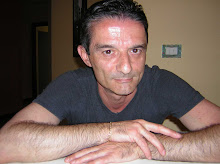In the last couple of days I've been cutting, assembling, flocking and ... waiting for the latex to dry, but the result is very satisfying. So yesterday evening, without waiting for some details I want to add to the cloth, I decided to "throw some miniatures" on the table, and below is the result.
Part of a Russian Division is trying to cross a river at a bridge, but a small French Brigade with a Battery in support discovered the maneuver and deployed to avoid it. In the meantime, the zealous French Brigade Commander sent a message to the Emperor, who was waiting for a chance to crush the Russians thanks to his superior troops concentration. This seemed a good opportunity. Above, a Russian brigade that crossed at a ford several miles upstream is joining the fight. On the hill the deployed French brigade with the battery in the middle, firing against the crossing Russians.
Napoleon with is staff (in front of the Chapel of St. Ludwig) supervises the deployment of an entire Corps, marching to the sound of the guns.
A view from the Russian side of the river. Few buildings of the Village of Schaufferg will remain intact... French Voltigueurs and Russian Jaegers skirmish in front of a small pond.
Division Commander General Shumbalovskij confers with his subordinates, while battalion after battalion the Russian cross the small bridge near the Old Water mill. The view is not encouraging for the battalions commanders.. On the left, a Brigade of Grenadiers waits its turn to cross.
The skirmishing, seen from above. A single Russian battalion could deploy on the other side of the bridge, and they are now trying to push away some French Voltigueurs deployed behind a low stone wall.
The French columns arriving at the double quick on the Battlefield.
Two more Batteries coming at the gallop near a Vineyard (the infantry will have to stop and make room).
A closer view of the Emperor's Staff...
And - finally - a view from behind the Russian Brigade arriving on the Battlefield after fording the river some miles upstream. French skirmishers spotted the new threat.
I'm very happy with my new cloth. I have still to add some details near the rivers and between fields, but the overall feeling is very good. I have also to learn how to place the batting under the cloth and where to pull pins to avoid wrinkles. Ah, and I have also to ask a friend with a good camera to take pictures :)
Subscribe to:
Post Comments (Atom)













It looks very good.
ReplyDeleteThe problem I have had with lightweight cloth covers is with elevations. My problem has been that the cloth won't lay down in the spaces between the two elevations, if I am using step-type hills. What are you using for hills, batting? I figure if I go to contoured hills and keep away from steep changes in elevation it might lay sufficiently flat.
Great pics, Sergio. The terrain indeed looks very good and natural. A great idea.
ReplyDeleteBest wishes
Giles
@ Dale: yes I used batting as advised by Jeffrey. It works because you can press t a bit and you can change the size and contour as you wish. Two elevations near to each other is a problem, though...
ReplyDelete@ Giles: many thanks, but I just copied Jeffrey :)
Fabulous pictures! Just started out with Napoleonics and you definitely give me something to aim for!
ReplyDeletePlease check out my blog: http://vulcanologists.blogspot.co.uk/
Vulcanologist, your Highlanders are simply fantastic!
ReplyDeleteSergio - Great looking terrain!! How many hours do you think you have invested in it? I wonder if a combination of hard contours and batting to smooth the edges and gaps would work to eliminate wrinkles and such?
ReplyDeleteJimG
Jim,
ReplyDeleteabout 8-10 hours of real "work", the rest was just waiting for the latex to dry, recycle the flock and things like that. I dismantled the previous table and I am mounting a new one using LESS pins and more rounded contours of the batting: it is way better, almost without wrinkles...